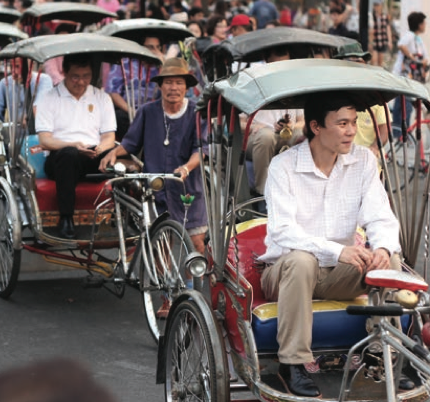Case-study /
Catalysing sustainable tourism: The case of Chiang Mai, Thailand


Summary
Chiang Mai is one of the fastest growing cities in Thailand and serves as a regional economic and cultural hub in the northern part of the country. Its rich cultural heritage and pristine natural resources draw millions of tourists each year. However, rapid growth and expansion, exacerbated by the rising tourist influx, has put a strain on the city’s natural resources. Faced with rampant unplanned development, air and water pollution, waste management problems and traffic congestion, the city of Chiang Mai has launched the non-motorised transport (NMT) system, which aims to reduce greenhouse gas emissions and create employment opportunities for the urban poor. Because of its many co-benefits, this climate compatible strategy has gained support from policy-makers and citizens alike. Reducing the health burden from urban air pollution will improve resilience of the population to future climate risks.
This CDKN case study, Catalysing sustainable tourism: The case of Chiang Mai, Thailand, by Kyoko Kusakabe, Pujan Shrestha and S. Kumar, of the Asian Institute of Technology and Trinnawat Suwanprik of the Chiang Mai Municipality, looks at how the NMT plan was developed, what characteristics of the planning process influenced its outcome, and what lessons the City of Chiang Mai has learned about climate compatible development planning as a result.
Key messages:
- Increasing greenhouse gas emissions from transport threaten the growing tourism industry in Chiang Mai. To address both climate and development concerns, the city government has advocated the use of non-motorised transport (NMT).
- Climate mitigation comes with co-benefits for local development. In addition to its potential to reduce greenhouse emissions, the NMT initiative addresses other issues such as traffic congestion, air quality, income generation for the poor and the long-term viability of the tourism industry.
- Small but concrete steps toward climate mitigation can create good examples. The project on sustainable urban tourism catalysed planning for a more ambitious expansion of NMT in the city, as well as the adoption of more sustainable land-use practices and low-carbon action in other sectors.
- This very positive local story nonetheless highlights some of the tensions and trade-offs around green tourism: namely, that local initiatives may address emissions in situ, but not the emissions produced by tourists as they travel to the locality.
This case study is part of CDKN’s Inside stories on climate compatible development.
